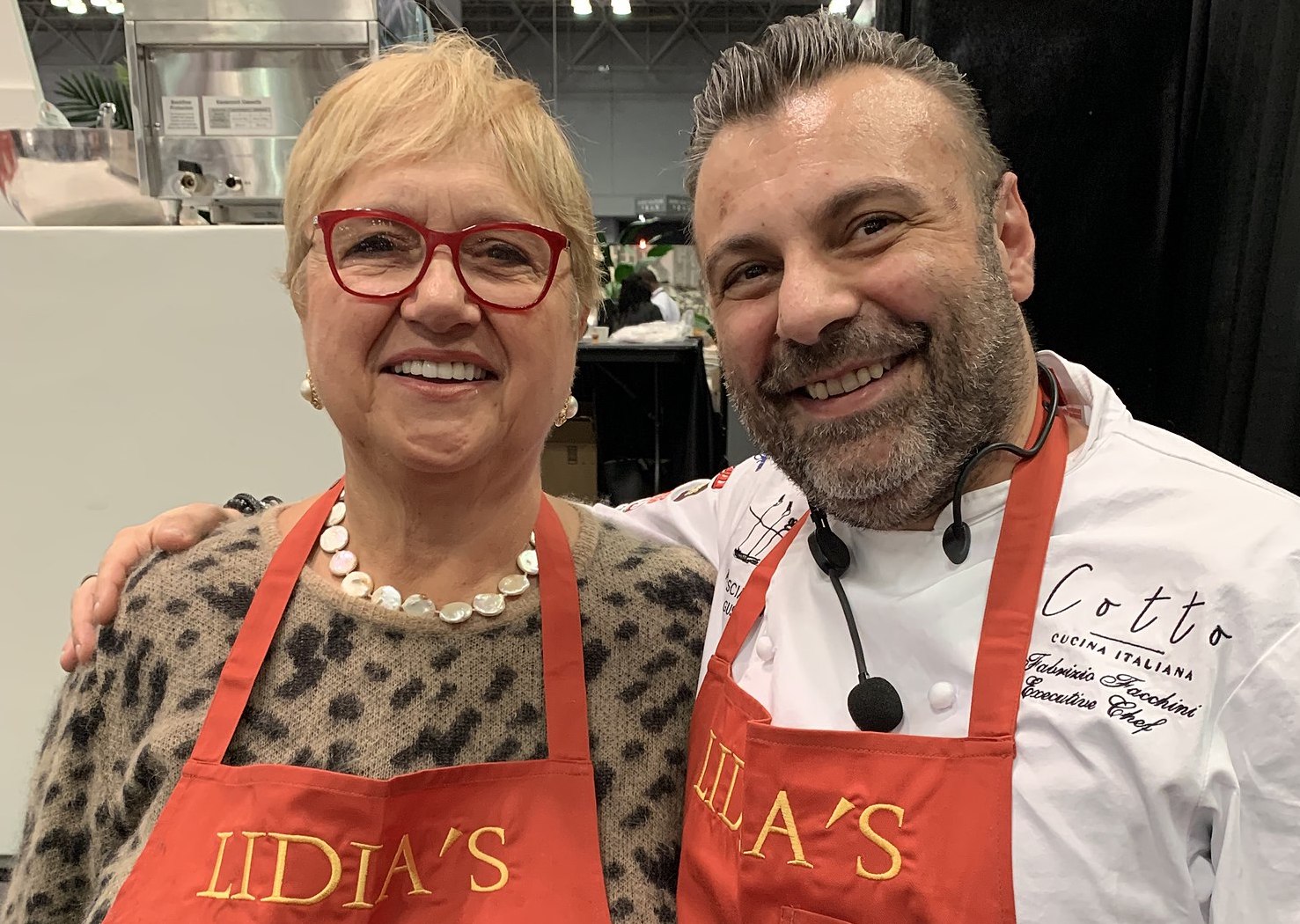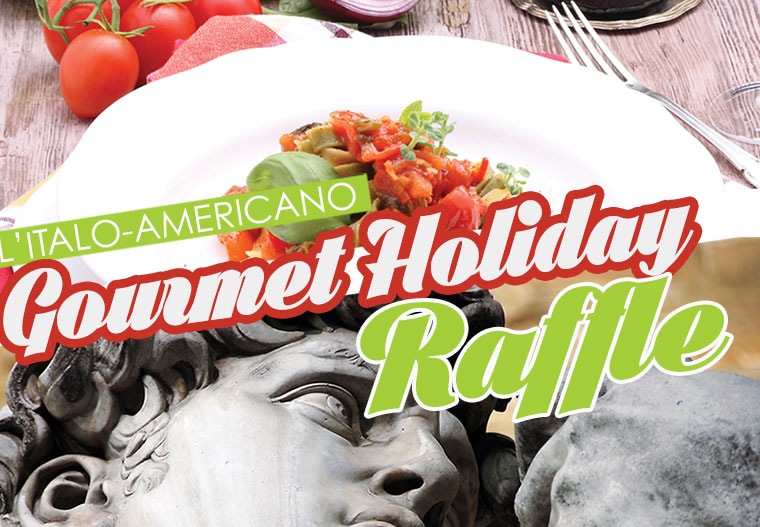Lidia Matticchio Bastianich, the renowned chef, restaurateur, author, television personality and pioneer who introduced and educated Americans to authentic Italian regional cuisine, met me at her Upper East Side restaurant Felidia on 58th Street for an afternoon chat about her immigrant experience and success in an industry that perpetually fails seventy-five percent of the time. When most individuals approaching seventy-years old contemplate retirement and moving to a more tropical location, Ms. Bastianich shows no sign of trading in her pots and pans for a more relaxed environment.
“You’re absolutely right” as she reaches over to pour mineral water into my glass and responds to why she is not even close to retiring “As the years progress, my enthusiasm to do what I love doing does not digress. I just love it. Of course it gets harder and I have different roles as you go on in life and in business but I have a great time doing what I’m doing.” Lidia, dressed in a black and white printed blouse and black slacks with an elegant light colored scarf loosely tied around her neck, talked at length about her passion to continue to make people happy through her food and the importance of being around her family.
“I get up every morning and have coffee with my ninety-six year-old mother, who lives with me, before my schedule begins. We talk; I ask her how she is feeling. My mother is lucid, well-versed and does the crossword puzzle every morning.” Like many Italian women, family has been Lidia’s primary focus and motivation in life. “I have my family with me and that’s a big push, an addendum to move forward” she explained. “My son Joe and my daughter Tanya, had their own positions in life, outside of the restaurant business, until they decided to apply their knowledge and carry on what we started here way back as a family.”
Joe Bastianich, who has established his own television career as a judge on food shows, worked on Wall Street before entering the family business while his sister, a graduate of Georgetown University, later earned her PhD in Italian Renaissance Art from Oxford University. Both decided to help their mother with new ideas in the restaurant business whether in cookbooks that Tanya helps write, or managing their mother’s Tavola Productions LLC. Some of their other ideas to expand Lidia’s brand include: a variety of pastas and sauces as well as Bastianich Vespa Bianco and Rosso wine.
“Joe has a great deal of knowledge with wine, so he decided to invest in an Italian vineyard,” Lidia said proudly. The vineyard is located in Buttrio, a town in the Friuli-Venezia Giulia region. I had noticed the 2010 Vespa Bianco displayed at the end of the restaurant’s mahogany bar once I walked in to check my coat. While I waited for Lidia, I was curious about tasting the Bastianich brand and requested a glass. I usually prefer red wines but Vespa had an interesting fruity aromatic smell and taste that was verified by one of the bar attendants. They and the manager were dressed in dark colored suits with solid navy blue ties contrasted with white collared shirts.
Felidia opened in 1981 through the concept of both Lidia and former husband Felice, (hence the restaurant’s name Felidia is a combination of their two first names) and bought a brownstone in Manhattan that the family still owns, with the intention of opening Felidia on the first floor. Felice Bastianich, who passed away in 2010, had the vision of owning an Italian restaurant in Manhattan and Lidia expanded the idea into a national brand.
“It all started in 1971: we had opened the first of two restaurants in Queens, New York” she said smiling with a sense of nostalgia. The couple developed a popular local clientele in Queens but eventually sold both restaurants to open Felidia where Lidia became the primary chef. Felice and Lidia married in 1966 but the pressures of running a family business took its toll on their marriage and they divorced in 1997. It was in Felidia, however, where Julia Child tried her risotto and other Italian dishes in the 1980’s. For Julia the dishes were so savory, delicious and different, unlike any other Italian food that she had ever had before. Almost immediately thereafter Lidia shared her recipes with Julia, and the two became friends.
As the steady lunch crowd flowed in to Felidia on the first floor, we sat directly across from one another at an upstairs table away from most patrons. Lidia before she continued sipped from her glass of mineral water, touched her bracelets and recounted the story when “One day Julia invited me on her show, and after appearing a producer suggested maybe you should have your own show” since Lidia appeared very composed and natural in her first television appearance. In 1993, a younger Lidia appeared on the Julia Child: Cooking with Master Chefs and cooked Risotto ai Funghi Selvatici.
It is precisely at that moment when her career as a chef was launched and led to her own show in 1998. For television viewers, Lidia’s personality exuded a sense of trust similar to what one has with a mother or aunt and that became her initial selling point. Her audience, like Julia Child’s popularity, was and is captivated by her humbleness and sincerity, and her ongoing cooking shows not only explain a variety of Italian regional dishes but offer Americans more than spaghetti and meatballs. Lidia along with Mario Lidia along with Mario Batali, a good friend of her son, revolutionized and changed Americans in their perception of Italian cuisine.

For many living in North America Italian food played second fiddle to French cuisine or other cultures that became more in vogue and popular during the 1990’s and early 2000’s. Lidia’s career and motherly image catapulted her into many American households who listened attentively to her recipes. Lidia’s career ran parallel to another Italian chef who was gaining popularity during the same year, Mario Batali. Gradually, Lidia and Mario brought Italian cooking to mainstream middle class America who were already enjoying pizza, eggplant parmigiana, lasagna and baked ziti but were now introduced to polenta, pancetta, truffles and tortellini in brodo.
From her first television appearance to her restaurants, Lidia created a successful brand that is synonymous with Italian cooking in the United States. Her journey, nonetheless, to reach the American dream was not easy in the beginning. In our next issue Lidia discusses her arduous journey to America and what it meant living in a communist country and why her parents were desperate to leave Istria as ethnic Italians.
Part two of Lidia Bastianich’s story will be published in the edition of January 26.































